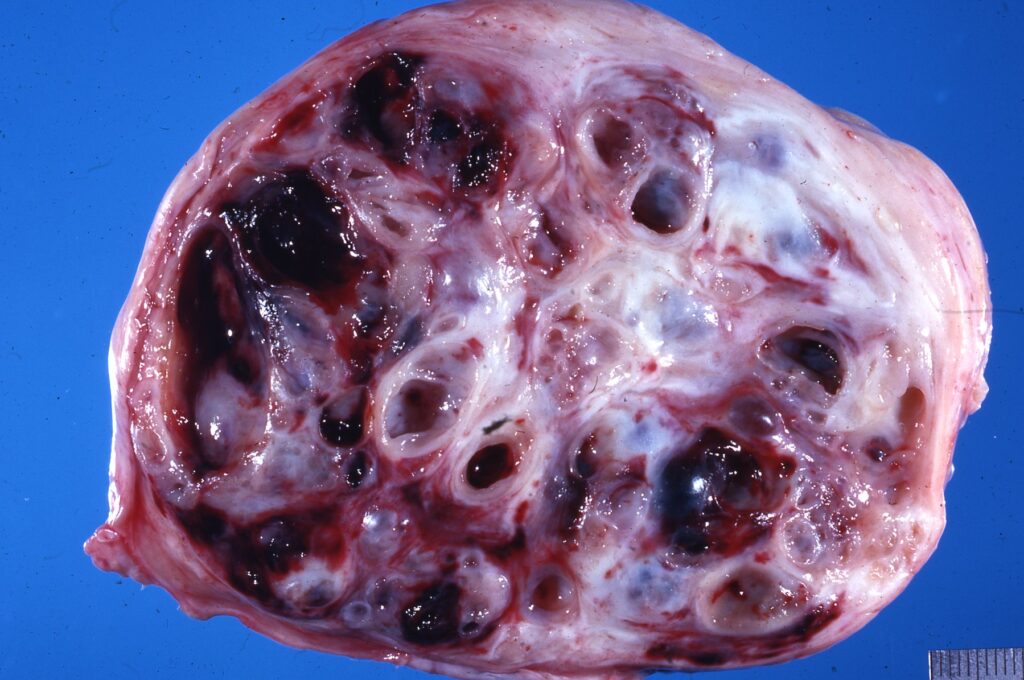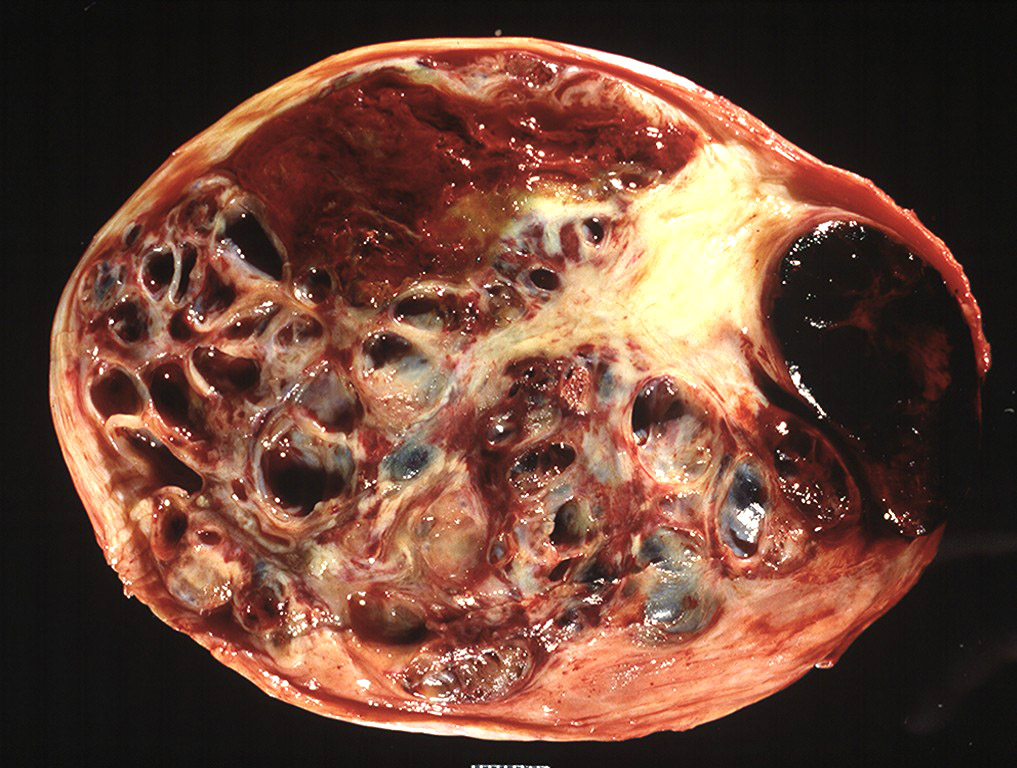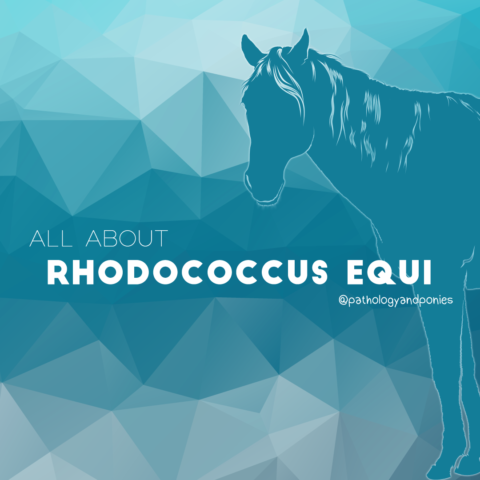Today’s path rounds are on 𝐠𝐫𝐚𝐧𝐮𝐥𝐨𝐬𝐚 𝐜𝐞𝐥𝐥 𝐭𝐮𝐦𝐨𝐮𝐫𝐬!
𝐖𝐡𝐚𝐭 𝐢𝐬 𝐢𝐭?
𝐆𝐫𝐚𝐧𝐮𝐥𝐨𝐬𝐚 𝐜𝐞𝐥𝐥 𝐭𝐮𝐦𝐨𝐮𝐫𝐬 are tumours of granulosa cells, which are the cells of the ovary that produce hormones, primarily estrogen and progesterone. These tumours are often huge by the time they are detected, frequently replacing the whole ovary!
𝐖𝐡𝐨 𝐠𝐞𝐭𝐬 𝐢𝐭?
Any species can get this, but we most commonly see it in mares.
𝐖𝐡𝐲 𝐢𝐬 𝐭𝐡𝐢𝐬 𝐚 𝐩𝐫𝐨𝐛𝐥𝐞𝐦?
Because the tumour is derived from cells that produce hormones, the tumour cells are often also able to produce hormones. This leads to three possible outcomes for the mare: 𝐚𝐧𝐞𝐬𝐭𝐫𝐮𝐬, 𝐜𝐨𝐧𝐭𝐢𝐧𝐮𝐨𝐮𝐬 𝐞𝐬𝐭𝐫𝐮𝐬 and 𝐦𝐚𝐥𝐞 𝐛𝐞𝐡𝐚𝐯𝐢𝐨𝐮𝐫.
Anestrus means that the mare is not cycling at all. One of the hormones that granulosa cells can produce is 𝐢𝐧𝐡𝐢𝐛𝐢𝐧, which prevents release of 𝐟𝐨𝐥𝐥𝐢𝐜𝐥𝐞-𝐬𝐭𝐢𝐦𝐮𝐥𝐚𝐭𝐢𝐧𝐠 𝐡𝐨𝐫𝐦𝐨𝐧𝐞. Follicle-stimulating hormone is the main hormone from the pituitary gland, and its main job is to stimulate cycling within the ovary. Therefore, if the tumour produces high levels of inhibin, the mare will not cycle appropriately.
Conversely, if the tumour produces high levels of estrogen and progesterone, then the mare may cycle continuously. Being in “heat” is often uncomfortable for mares, so this can frequently cause behavioural issues.
Finally, depending on the tumour, sometimes they can produce lots of testosterone. This is because testosterone is actually the precursor to estrogen, so the granulosa cells normally would make testosterone, then convert it to estrogen. If the tumour cells aren’t correctly converting the testosterone, then testosterone will accumulate, leading to stallion-like behaviours in these mares.
𝐇𝐨𝐰 𝐢𝐬 𝐢𝐭 𝐝𝐢𝐚𝐠𝐧𝐨𝐬𝐞𝐝?
Often, these mares present with behavioural issues, or even not cycling and difficulty getting pregnant. Based on suspicion, the veterinarian may ultrasound them to look for an enlarged, cystic (looks like Swiss cheese) ovary characteristic of these tumours. The opposite ovary will also likely be small and non-functional.
At necropsy, granulosa cell tumours are quite characteristic, being large, cystic masses filled with fluid. Occasionally they can have solid areas that are occasionally yellow from testosterone accumulation.
𝐇𝐨𝐰 𝐢𝐬 𝐢𝐭 𝐭𝐫𝐞𝐚𝐭𝐞𝐝?
The only treatment available for these tumours is surgical removal. Usually, mares return to normal cycling within 6-8 months, and have normal fertility.
𝐏𝐡𝐨𝐭𝐨𝐬
1-5) Various photos of granulosa cell tumours! Major Swiss cheese vibes ![]()
𝐒𝐨𝐮𝐫𝐜𝐞𝐬
Maxie, G. Jubb, Kennedy and Palmer’s Pathology of Domestic Animals, Volume 3. Sixth Edition.
Photos 1-5 courtesy of Noah’s Arkive.









